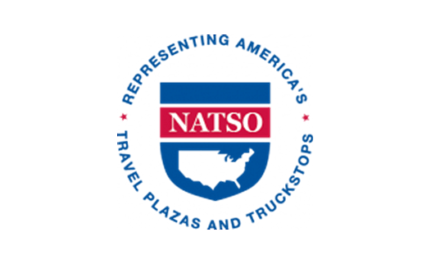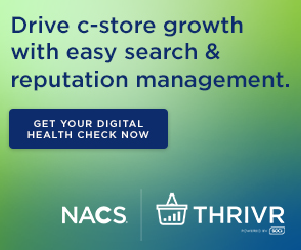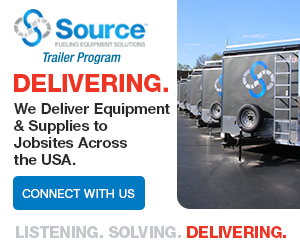Jason Palmer, SmartDrive
Within the fuel industry, video-based safety solutions are becoming an increasingly important aspect of companies’ comprehensive approach to safety, as drivers and managers continue to recognize the benefits the technology can offer. Given the dangers associated with driving a tanker truck, it is critical for fuel companies to invest in the best technology to protect drivers, ensure standard operating procedures are being followed, improve operational safety and secure the bottom line.
The transportation of fuel can be among the most dangerous aspects of our industry. In fact, of all fatalities in the oil and gas industry, 41% occur during transportation, highlighting the importance of improving driver safety. Tank-truck driving not only presents risks for the drivers themselves, but also for those around them on the road. To keep company drivers, others on the road and fueling sites safe, companies can adopt video-based safety programs. Video-based safety and analytics offer the ability to improve employees’ driving and lower the frequency of collisions and other incidents on the road and during deliveries. As a result, companies see lower overall costs.
The Safety Benefits of Video Technology
By utilizing video-based safety technology, companies are able to ensure safe habits among drivers. Video helps identify drivers’ risky habits, including distracted driving, too closely following the vehicle in front of them, hard braking and more. When triggered, these systems record the incident, and, coupled with expert review and data analytics, companies can receive actionable insights to effectively coach their drivers to improve. By understanding the most common risks among their drivers, and prioritizing intervention based on company-specific criteria, companies can proactively correct these habits through safety training and one-on-one driver coaching sessions.
Video-based safety technology also helps make sure standard operating procedures are being followed, ensuring the safety of workers and the work environment. By reviewing captured video of the area surrounding the truck, managers may monitor and quickly intervene to address any breaches of standard protocol. For the fuel industry specifically, proper delivery and unloading is imperative to ensure the safety of all involved. Whether incorrect octane mixes, mistaken hose hookups or other lapses, managers are able to identify where the tank-truck driver went wrong and correct these behaviors to prevent future accidents. With fuel delivery mistakes having far-reaching consequences, it is imperative that managers ensure all drivers are properly doing their job. By monitoring and confirming all adherence with standard operating procedures, companies avoid disastrous accidents.
The Financial Benefits of Video Technology
In addition to increasing driver safety, video technology can help companies save money and improve the bottom line. Today, nuclear verdicts and skyrocketing insurance premiums are the norm. To ensure their very survival, companies must take every measure possible to minimize risk, reduce collision frequency and improve overall safety. Typically, 30% of a company’s budget is spent on collisions, violations and citations that could have been prevented. According to the Federal Motor Carrier Safety Administration, the average cost of a truck crash resulting in zero injuries is $91,000. When injuries do occur, the average jumps to $200,000 and when a tragic fatality occurs, the average cost is $3.6 million.
Given the ROI of video-based safety programs, companies are wise to recognize the benefits of adoption and prioritize this investment in fleet safety to proactively protect the bottom line. By identifying risk and intervening to avoid incidents on the road, video platforms help companies avoid hefty payouts. In 2018, a court decision left a Texas-based oil services company owing $101 million following a tragic accident.
Debilitating legal judgements are at an all-time high and insurance premiums continue to rise—even for companies with near-perfect records. But, with video-based safety technology, companies can use video recordings in court to exonerate drivers. Whether the cameras are road-facing, cab-facing or a 360-degree view around the vehicle, video is critical in understanding exactly what happened at the time of the incident.
Selecting a Solution Provider
When choosing a video-based safety program, factors to consider include specific offerings, scalability and flexibility. When assessing which vendor will best fit the needs of their company, managers should consider the features offered by the program—for example, do they offer 360-degree views, extended recording and distracted driving triggers. Additionally, managers must consider if the technology is able to grow as their company does—is the platform extensible to accommodate fleet growth and employee expansion? Hardware flexibility is also important, so managers should be certain the solution can meet the company’s needs today and into the future, as operations may evolve. Further, as the technology evolves, it is important that managers consider how each solution provides updates—is it quick or will it require drivers to be off the road while hardware is replaced? Partnering with the right provider can be the difference between success and failure when it comes to adopting video-based safety.
With the dangers involved with fuel delivery, taking precautionary measures to improve safety demonstrates the company’s commitment to its drivers and the overall safety culture of the company. Video-based safety technology allows companies to improve driver performance as well as avoid costly repercussions like nuclear verdicts, property damage and workers’ comp claims. When examining which technology provider to select, managers must ensure the solution they choose can identify and prioritize risk, support driver coaching and adherence with SOPs, and is scalable and flexible. With these criteria in mind, the company will be well on the road to a safer fleet.
 Jason Palmer is the COO of SmartDrive Systems, a leading provider of video-based safety and transportation intelligence. As an expert in driver safety and risk mitigation, Jason helps companies and fleets in a variety of industries, including fuel, identify and eliminate the riskiest driving behaviors that lead to collisions.
Jason Palmer is the COO of SmartDrive Systems, a leading provider of video-based safety and transportation intelligence. As an expert in driver safety and risk mitigation, Jason helps companies and fleets in a variety of industries, including fuel, identify and eliminate the riskiest driving behaviors that lead to collisions.









